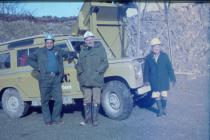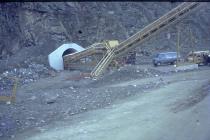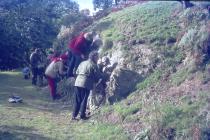Content can be downloaded for non-commercial purposes, such as for personal use or in educational resources.
For commercial purposes please contact the copyright holder directly.
Read more about the The Creative Archive Licence.
Description
The earliest documented geological specimens to survive in the Museum’s collections are those described by Lhwyd in his Lithophylacii Britannici ichnographia of 1699. One hundred and twenty copies were published in February of that year; a second, posthumous, “Editio Altera” was published in 1760. A selection of Lhuyd’s surviving specimens, and the plates of the 1760 edition are figured here. Who was Edward Lhwyd? Edward Lhwyd was born in 1660, the illegitimate son of Edward Lloyd of Llanforda, near Oswestry, Shropshire, and Bridget Pryse of Gogerddan, Cardiganshire. In 1682 he entered Jesus College, Oxford, where he studied for five years, although he did not finish his degree course.
In 1686, Lhwyd put before the Oxford Philosophical Society a new catalogue of all the British fossils in the Ashmolean Museum, and over the next few years he continued to add to it, with a view to publication. The work eventually appeared in 1699. Written in Latin and entitled Lithophylacii Britannici ichnographia, it consisted of a catalogue of 1,766 minerals and fossils, and was the first illustrated catalogue of a public collection of fossils to be published in England. Lhuyd’s aim was to take the contents of the museum cabinets and put them into the hands of the field-worker, and several aspects of the work reflect this - the text was entirely in Latin and thus accessible to a pan-European readership, the engravings of fossils would enable even beginners to recognise immediately those things that they might discover, and the book could easily be taken into the field and used there because of its handy octavo size.
As an appendix at the end of the book were six letters to friends, dealing with geological subjects. The sixth, addressed to John Ray and dated 29 July 1698, extends to twelve pages, and sets out Lhwyd’s views on the origin of fossils. “He suggested a sequence in which mists and vapours over the sea were impregnated with the ‘seed’ of marine animals. These were raised and carried for considerable distances before they descended over land in rain and fog. The ‘invisible animacula’ then penetrated deep into the earth and there germinated; and in this way complete replicas of sea organisms, or sometimes only parts of individuals, were reproduced in stone. Lhwyd also suggests that fossil plants known to him only as resembling leaves of ferns and mosses which have minute ‘seed’, were formed in the same manner. He claimed that this theory explained a number of features about fossils in a satisfactory manner: the presence in England of nautiluses and exotic shells which were no longer found in neighbouring seas; the absence of birds and viviparous animals not found by Lhwyd as fossils; the varying and often quite large size of the forms, not usual in present oceans; and the variation in preservation from perfect replica to vague representation, which was thought to represent degeneration with time” (Edmonds, 1973, p. 307-8).
Image 2: © Oxford University Museum of Natural History - http://www.oum.ox.ac.uk/learning/pdfs/lhwyd.pdf








Do you have information to add to this item? Please leave a comment
Comments (0)
You must be logged in to leave a comment